Python 官方文档:入门教程 => 点击学习
这篇文章给大家分享的是有关python中如何利用PyVista进行mesh的色彩映射的内容。小编觉得挺实用的,因此分享给大家做个参考,一起跟随小编过来看看吧。PyVista简介PyVista是什么PyVista 是一个:VTK for hu
这篇文章给大家分享的是有关python中如何利用PyVista进行mesh的色彩映射的内容。小编觉得挺实用的,因此分享给大家做个参考,一起跟随小编过来看看吧。
PyVista 是一个:
PyVista(以前的vtki)是可视化工具包(VTK)的一个助手模块,它采用了一种不同的方法,通过NumPy和直接数组访问与VTK进行接口。这个包提供了一个Python化的、文档化良好的接口,展示了VTK强大的可视化后端,以方便对空间引用的数据集进行快速原型化、分析和可视化集成。
该模块可用于演示文稿和研究论文的科学绘图,以及其他依赖网格的Python模块的支持模块。
官方教程
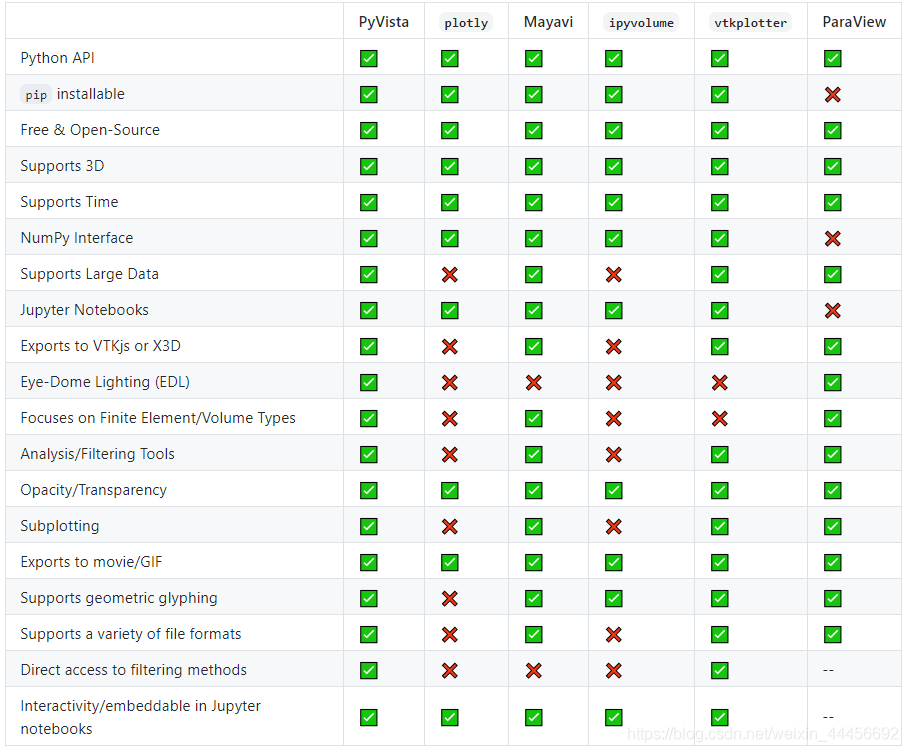
pip install pyvista -i https://pypi.tuna.tsinghua.edu.cn/simplemesh类型
pyvista支持读取大多数常见的mesh文件类型,比如PLY,VTK,STL ,OBJ ,BYU 等,一些不常见的mesh文件类型,比如FEniCS/Dolfin_ XML fORMat
(很遗憾,pyvista不支持点云PCD格式,不过可以通过pcdpy、pclpy、python-pcl等库来读取pcd文件)
import pyvista as pv# 读取mesh = pv.read('pointCloudData/data.vtk')# 显示mesh.plot()# 其他类似mesh = pv.read('pointCloudData/data.ply')……支持读取图片类型数据JPEG, TIFF, PNG等
# 读取image = pv.read('my_image.jpg')# 显示image.plot(rgb=True, cpos="xy")# 其余图片类型类似……项目中需要用到根据高度来对mesh进行彩色映射,在pyvista中大概有四种方法
自定义
代码
import pyvista as pvimport matplotlib.pyplot as pltfrom matplotlib.colors import ListedColormapimport numpy as npdef mesh_cmp_custom(mesh, name): """ 自定义色彩映射 :param mesh: 输入mesh :param name: 比较数据的名字 :return: """ pts = mesh.points mesh[name] = pts[:, 1] # Define the colors we want to use blue = np.array([12 / 256, 238 / 256, 246 / 256, 1]) black = np.array([11 / 256, 11 / 256, 11 / 256, 1]) grey = np.array([189 / 256, 189 / 256, 189 / 256, 1]) yellow = np.array([255 / 256, 247 / 256, 0 / 256, 1]) red = np.array([1, 0, 0, 1]) c_min = mesh[name].min() c_max = mesh[name].max() c_scale = c_max - c_min mapping = np.linspace(c_min, c_max, 256) newcolors = np.empty((256, 4)) newcolors[mapping >= (c_scale * 0.8 + c_min)] = red newcolors[mapping < (c_scale * 0.8 + c_min)] = grey newcolors[mapping < (c_scale * 0.55 + c_min)] = yellow newcolors[mapping < (c_scale * 0.3 + c_min)] = blue newcolors[mapping < (c_scale * 0.1 + c_min)] = black # Make the colormap from the listed colors my_colormap = ListedColormap(newcolors) mesh.plot(Scalars=name, cmap=my_colormap)if __name__ == '__main__': mesh = pv.read('pointCloudData/1.ply') mesh_cmp_custom(mesh, 'y_height')效果:
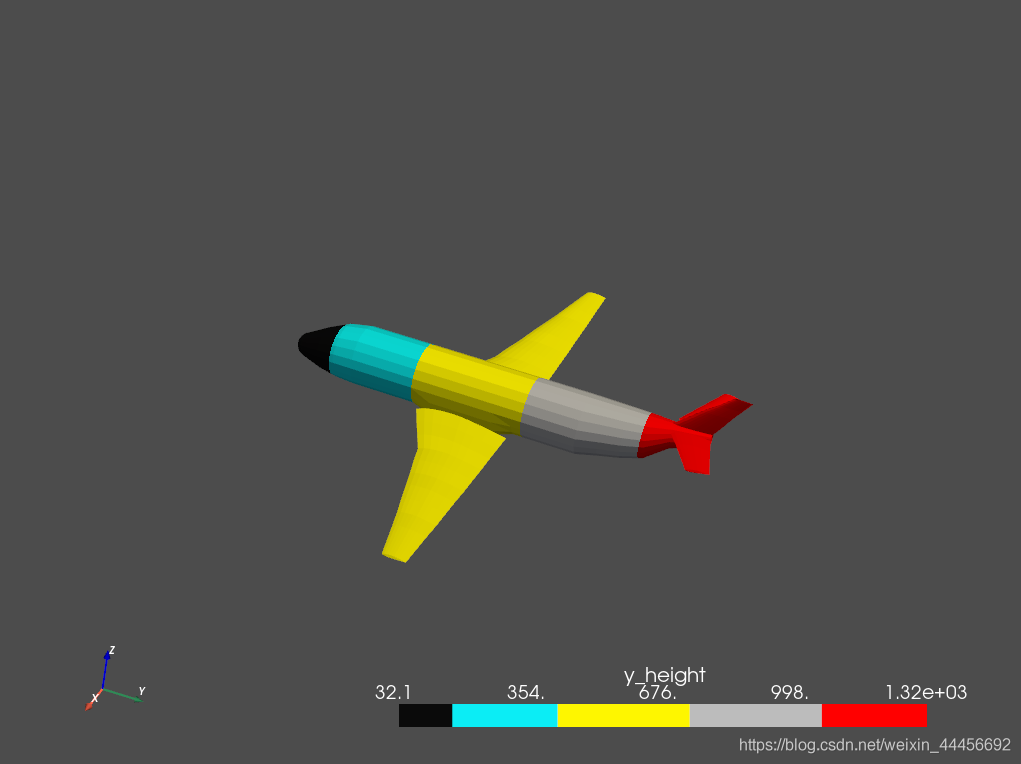
函数mesh.plot(scalars=name, cmap='viridis_r')
其中cmap支持的样式:
‘Accent', ‘Accent_r', ‘Blues', ‘Blues_r', ‘BrBG', ‘BrBG_r', ‘BuGn', ‘BuGn_r', ‘BuPu', ‘BuPu_r', ‘CMRmap', ‘CMRmap_r', ‘Dark2', ‘Dark2_r', ‘GnBu', ‘GnBu_r', ‘Greens', ‘Greens_r', ‘Greys', ‘Greys_r', ‘OrRd', ‘OrRd_r', ‘Oranges', ‘Oranges_r', ‘PRGn', ‘PRGn_r', ‘Paired', ‘Paired_r', ‘Pastel1', ‘Pastel1_r', ‘Pastel2', ‘Pastel2_r', ‘PiYG', ‘PiYG_r', ‘PuBu', ‘PuBuGn', ‘PuBuGn_r', ‘PuBu_r', ‘PuOr', ‘PuOr_r', ‘PuRd', ‘PuRd_r', ‘Purples', ‘Purples_r', ‘RdBu', ‘RdBu_r', ‘RdGy', ‘RdGy_r', ‘RdPu', ‘RdPu_r', ‘RdYlBu', ‘RdYlBu_r', ‘RdYlGn', ‘RdYlGn_r', ‘Reds', ‘Reds_r', ‘Set1', ‘Set1_r', ‘Set2', ‘Set2_r', ‘Set3', ‘Set3_r', ‘Spectral', ‘Spectral_r', ‘Wistia', ‘Wistia_r', ‘YlGn', ‘YlGnBu', ‘YlGnBu_r', ‘YlGn_r', ‘YlOrBr', ‘YlOrBr_r', ‘YlOrRd', ‘YlOrRd_r', ‘afmhot', ‘afmhot_r', ‘autumn', ‘autumn_r', ‘binary', ‘binary_r', ‘bone', ‘bone_r', ‘brg', ‘brg_r', ‘bwr', ‘bwr_r', ‘cividis', ‘cividis_r', ‘cool', ‘cool_r', ‘coolwarm', ‘coolwarm_r', ‘copper', ‘copper_r', ‘cubehelix', ‘cubehelix_r', ‘flag', ‘flag_r', ‘GISt_earth', ‘gist_earth_r', ‘gist_gray', ‘gist_gray_r', ‘gist_heat', ‘gist_heat_r', ‘gist_ncar', ‘gist_ncar_r', ‘gist_rainbow', ‘gist_rainbow_r', ‘gist_stern', ‘gist_stern_r', ‘gist_yarg', ‘gist_yarg_r', ‘gnuplot', ‘gnuplot2', ‘gnuplot2_r', ‘gnuplot_r', ‘gray', ‘gray_r', ‘hot', ‘hot_r', ‘hsv', ‘hsv_r', ‘inferno', ‘inferno_r', ‘jet', ‘jet_r', ‘magma', ‘magma_r', ‘nipy_spectral', ‘nipy_spectral_r', ‘ocean', ‘ocean_r', ‘pink', ‘pink_r', ‘plasma', ‘plasma_r', ‘prism', ‘prism_r', ‘rainbow', ‘rainbow_r', ‘seismic', ‘seismic_r', ‘spring', ‘spring_r', ‘summer', ‘summer_r', ‘tab10', ‘tab10_r', ‘tab20', ‘tab20_r', ‘tab20b', ‘tab20b_r', ‘tab20c', ‘tab20c_r', ‘terrain', ‘terrain_r', ‘turbo', ‘turbo_r', ‘twilight', ‘twilight_r', ‘twilight_shifted', ‘twilight_shifted_r', ‘viridis', ‘viridis_r', ‘winter', ‘winter_r'
代码
import pyvista as pvdef mesh_cmp(mesh, name): """ 使用进行plot自带的色彩映射 :param mesh: 输入mesh :param name: 比较数据的名字 :return: """ pts = mesh.points mesh[name] = pts[:, 1] mesh.plot(scalars=name, cmap='viridis_r') if __name__ == '__main__': mesh = pv.read('vtkData/airplane.ply') mesh_cmp(mesh, 'y_height')效果
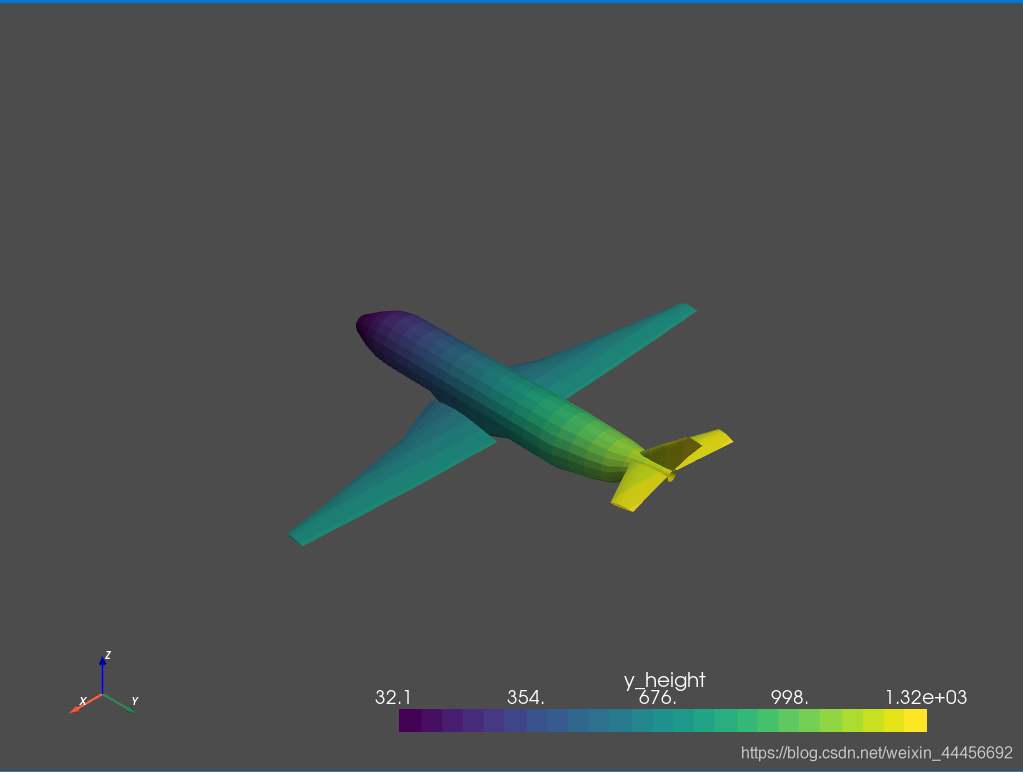
代码
import pyvista as pvimport matplotlib.pyplot as pltdef mesh_cmp_mpl(mesh, name): """ 使用Matplotlib进行色彩映射 :param mesh: 输入mesh :param name: 比较数据的名字 :return: """ pts = mesh.points mesh[name] = pts[:, 1] mlp_cmap = plt.cm.get_cmap("viridis", 25) mesh.plot(scalars=name, cmap=mlp_cmap) if __name__ == '__main__': mesh = pv.read('vtkData/airplane.ply') mesh_cmp_mpl(mesh, 'y_height')效果
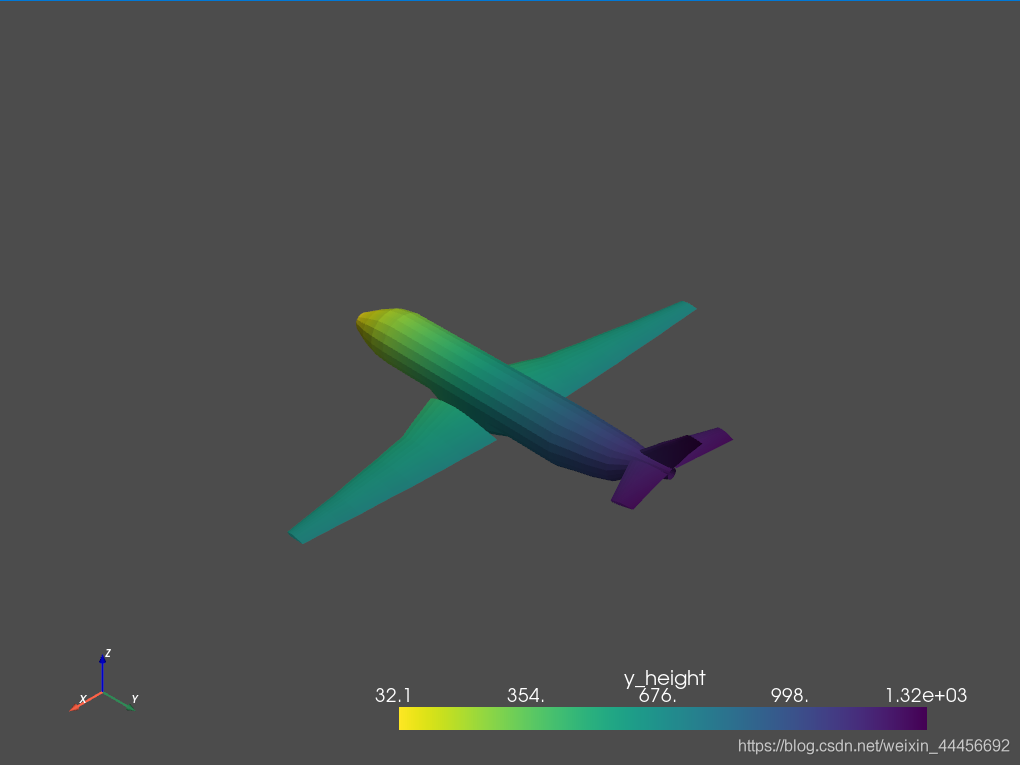
需要先安装colorcet:
pip install colorcet使用方法和上面几种方法类似,若想使用colorcet的colormaps中的hot:
mesh.plot(scalars=name, cmap=“hot”)
代码
def mesh_cmp_colorcet(mesh, name): """ 使用进行colorcet进行色彩映射 :param mesh: 输入mesh :param name: 比较数据的名字 :return: """ pts = mesh.points mesh[name] = pts[:, 1] mesh.plot(scalars=name, cmap=colorcet.fire) if __name__ == '__main__': mesh = pv.read('vtkData/airplane.ply') mesh_cmp_colorcet(mesh, 'y_height')效果:
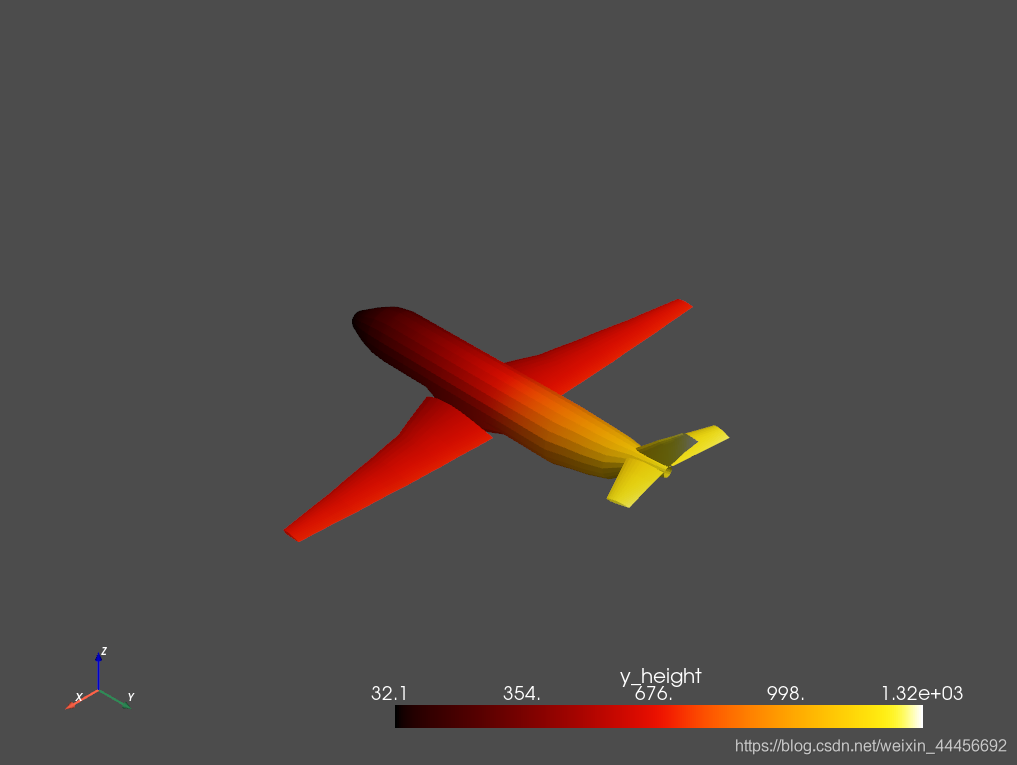
感谢各位的阅读!关于“Python中如何利用PyVista进行mesh的色彩映射”这篇文章就分享到这里了,希望以上内容可以对大家有一定的帮助,让大家可以学到更多知识,如果觉得文章不错,可以把它分享出去让更多的人看到吧!
--结束END--
本文标题: Python中如何利用PyVista进行mesh的色彩映射
本文链接: https://lsjlt.com/news/269834.html(转载时请注明来源链接)
有问题或投稿请发送至: 邮箱/279061341@qq.com QQ/279061341
2024-03-01
2024-03-01
2024-03-01
2024-02-29
2024-02-29
2024-02-29
2024-02-29
2024-02-29
2024-02-29
2024-02-29
回答
回答
回答
回答
回答
回答
回答
回答
回答
回答
0